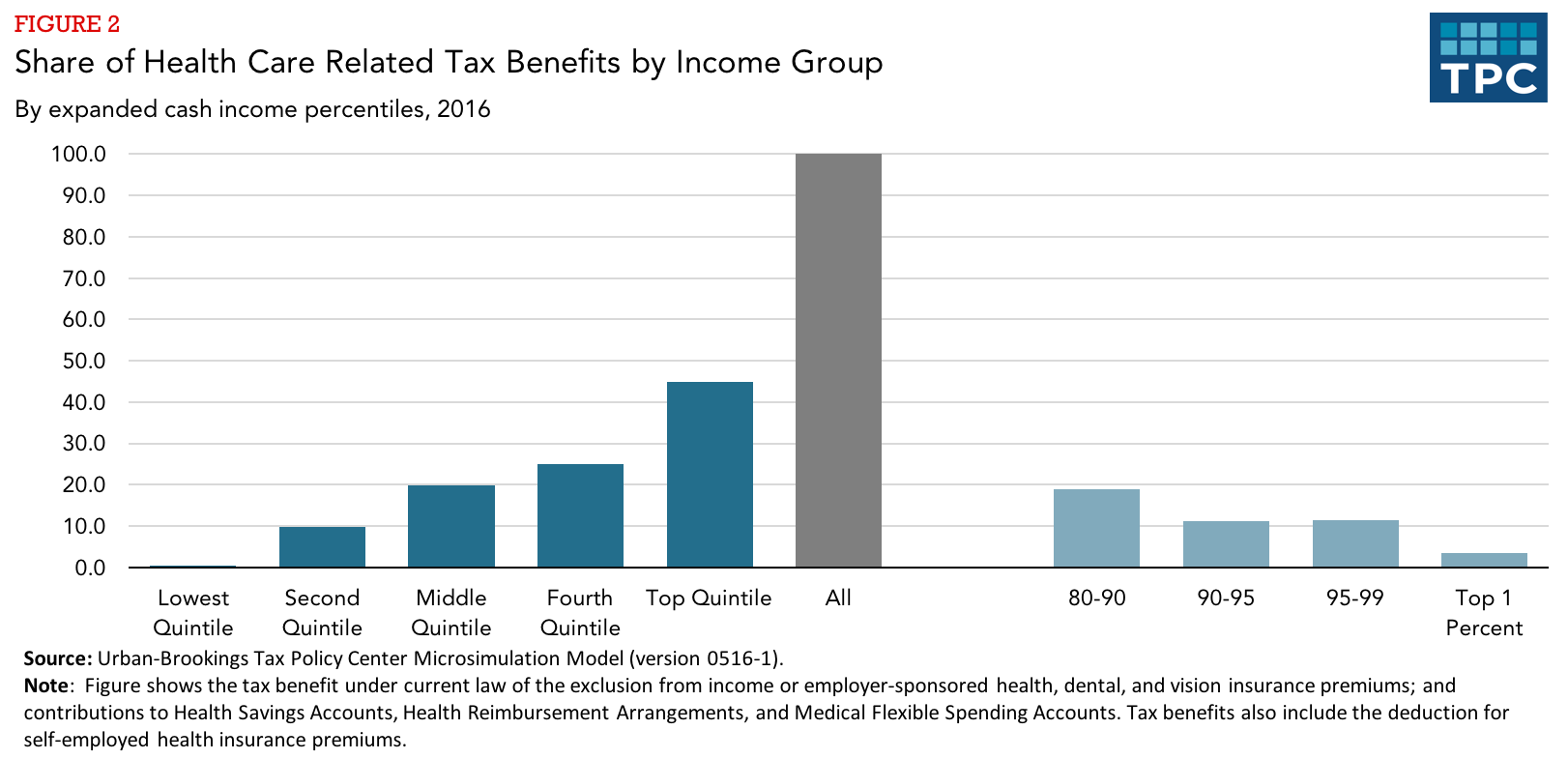The voices of Tax Policy Center's researchers and staff

This post is part of the Tax Policy Center’s new series, Tax Line, which digs into the data behind the day’s most pressing tax policy issues. You can read all posts in this monthly series by clicking on the topics tag, TaxLine, at the bottom of this post.
In 2015, the federal government spent over $980 billion on health care, of which $260 billion – 27% – was through the tax code. An updated analysis by the Tax Policy Center finds the majority of these subsidies - focused on employer-provided health benefits - disproportionately benefit high-income households.
The exclusion of employer contributions for medical insurance premiums is the largest health-care related tax benefit. Other smaller tax provisions include contributions to tax-preferred health spending accounts and deductions for self-employment health insurance premiums.

Based on new estimates for 2016, about half of households receive some benefit from health related tax expenditures. However, while about 85 percent of the highest-income 20 percent gets a tax cut thanks to these subsidies, only 9 percent of the lowest income households benefit.
 Looking at the distribution of total benefits, the top 20 percent get about 45 percent while the bottom fifth gets 0.5 percent. However, this unequal distribution of benefits tapers off within the top 20 percent. The very wealthy seem to get the same share of benefit from these tax exemptions as the much discussed 0.1 percent.
Looking at the distribution of total benefits, the top 20 percent get about 45 percent while the bottom fifth gets 0.5 percent. However, this unequal distribution of benefits tapers off within the top 20 percent. The very wealthy seem to get the same share of benefit from these tax exemptions as the much discussed 0.1 percent.

On average, health-related tax breaks boost after-tax incomes by 1.4 percent. Middle income households receive tax savings equal to 1.8 percent of their after-tax income.
The lowest income households, who pay little tax and rarely receive employer-sponsored insurance, see almost no benefit from the tax preferences, with their after-tax incomes rising by just 0.1 percent,. Similarly, the top 1 percent sees their after-tax incomes rise by just 0.3 percent. That’s because of the rapid increase in income at the top of the income distribution and because health care costs are likely to plateau for the very rich.
Medical tax preferences are often exemptions or deductions rather than credits. In a progressive income tax, this design favors high-income taxpayers who are subject to higher tax rates. Policymaker should consider the distribution of benefits from these as they decide how best to tackle the healthcare policy questions facing the United States care.
Posts and comments are solely the opinion of the author and not that of the Tax Policy Center, Urban Institute, or Brookings Institution.
Topics
Share this page
LadiRoyale Davis, center, reacts to receiving a shot as her mother, Danyelle Lee, watches at the William F. Ryan Community Health Center in New York, Wednesday, June 27, 2012. (AP Photo/Seth Wenig)
